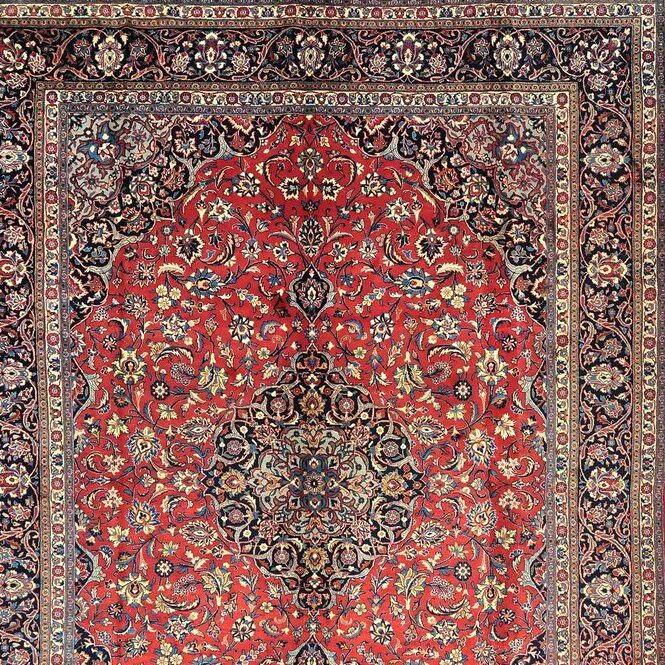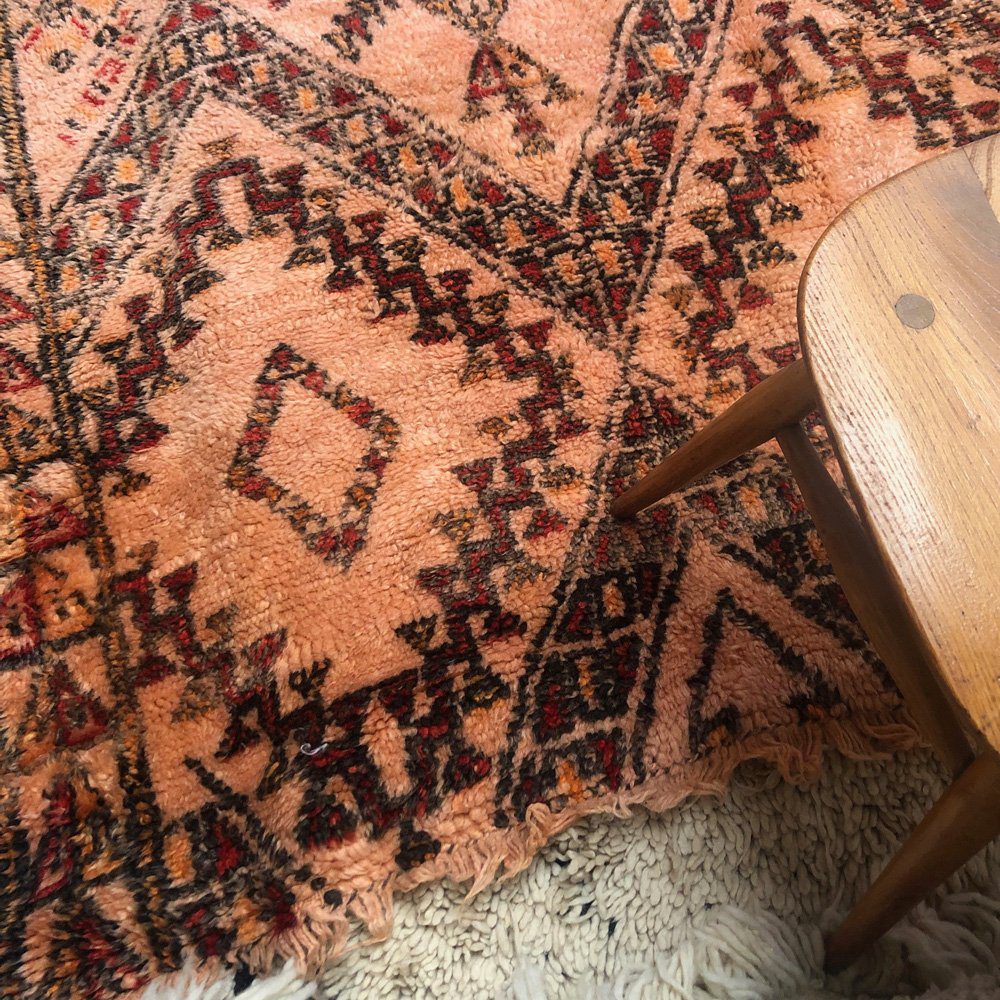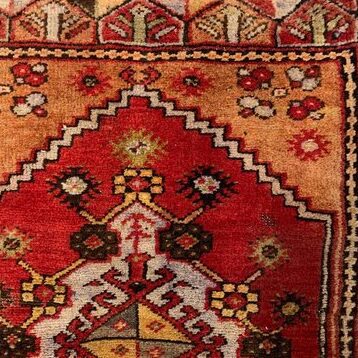Authentic Hamadan Rugs - A Buyer's Guide
Hamadan rugs, with their exquisite craftsmanship and storied history, hold a special place in the world of Persian rugs. These handwoven treasures originate from the Hamadan region in western Iran and are celebrated for their exceptional quality.
The Rich Heritage of Hamadan
Hamadan, often referred to as the "city of rugs," has been a hub of rug production for centuries. The weavers in this region have inherited the art of rug making from generations past, and it's a craft deeply embedded in their cultural heritage.
Unveiling Timeless Beauty
What sets Hamadan rugs apart are their captivating designs and unmatched durability. Crafted using premium wool and featuring intricate motifs, these rugs are renowned for their ability to withstand the test of time.
Discovering Hamadan Rug Traits
When exploring the world of Hamadan rugs, a few distinctive traits stand out, distinguishing them from other Persian carpets. These features are not only a testament to the rich history and cultural heritage of the Hamadan region but also to the exceptional skill of the weavers.
Premium Wool
Hamadan rugs boast the use of some of the finest wool in the carpet-making industry. This wool is meticulously chosen from high-grade sources, ensuring each strand contributes to the overall quality of the finished product. The preparation process of the wool involves careful cleaning, spinning, and dyeing, which results in a yarn that is both durable and lustrously soft. This high-quality wool gives Hamadan rugs their characteristic warmth and inviting texture, making them a popular choice for adding coziness and luxury to any room.
Intricate Motifs
The allure of Hamadan rugs is significantly enhanced by their intricate motifs and detailed patterns. These designs are deeply rooted in the history and traditions of the Hamadan area, with each motif telling a story or symbolizing a cultural belief. Geometric patterns, floral designs, and animal figures are commonly depicted, each meticulously crafted to showcase the weaver's artistry. The diversity in designs makes each Hamadan rug unique, offering a wide range of styles for collectors and homeowners to choose from.
Durable Craftsmanship
Renowned for their durability, Hamadan rugs are woven with techniques passed down through generations. The weavers in Hamadan use a special type of knotting and a tight weave that ensures the rug's longevity. This craftsmanship not only makes the rugs sturdy enough to withstand daily wear and tear but also helps preserve their beauty over time. The combination of premium materials and skilled weaving results in a rug that can be a lasting centrepiece in homes, embodying both beauty and resilience.
Together, these characteristics—premium wool, intricate motifs, and durable craftsmanship—define Hamadan rugs, making them a cherished choice for those looking to enrich their living spaces with a piece of Persian heritage.
Joe Rugs - Carpet Expert
Hello! I'm Joseph Rugs, the founder of CarpetJoe.com and your guide through the intricate world of carpets. Born and raised in London with a deep-rooted passion for art and culture, I've explored the globe to bring the rich tapestry of carpet weaving right to your screen. My academic background in arts and humanities from Oxford has fuelled my curiosity, leading me to uncover the stories behind every knot and weave. As a family man, my adventures are shared with my loved ones, enriching our lives with every piece of art we encounter. Join me as we explore the beauty and craftsmanship of carpets together.
Comparing Persian Hamadan and Turkish Rugs
Hamadan rugs and Turkish rugs, while both steeped in rich history and cultural significance, exhibit distinct differences that highlight the diverse weaving traditions of their respective regions.
Design Motifs
In the realm of design, Persian Hamadan and Turkish rugs present their unique aesthetic appeals. Hamadan rugs are renowned for their intricate geometric patterns, characterized by angular lines and shapes that convey a sense of order and precision. These patterns often carry symbolic meanings, rooted in the historical and cultural narratives of the Persian region. Conversely, Turkish rugs are celebrated for their curvilinear and floral designs, which tend to be more fluid and naturalistic, reflecting the beauty of nature and the influence of Ottoman art and architecture. The contrast in motifs underscores the different artistic directions influenced by each culture's preferences and histories.
Weaving Techniques
The distinction extends to the technical aspects of rug making, particularly the knotting techniques employed by weavers. Persian Hamadan rugs utilize the asymmetrical (or Persian) knot, a technique that allows for a higher density of knots and, consequently, more detailed designs. This knotting style is a hallmark of Persian craftsmanship, contributing to the durability and quality of Hamadan rugs. In contrast, Turkish rugs are known for their use of the symmetrical (or Turkish/Ghiordes) knot, which produces a strong and secure pile but also allows for different design and texture qualities. This difference in knotting techniques not only affects the rug's texture and appearance but also reflects the weaving traditions that have been passed down through generations in each culture.
Cultural Influences
The cultural backdrop of Hamadan and Turkish rugs adds another layer of distinction. Persian Hamadan rugs are imbued with the rich artistic and historical heritage of Iran, drawing from centuries-old Persian culture, religion, and symbolism. These rugs are a testament to the long-standing tradition of Persian rug making, renowned worldwide for its sophistication and depth. On the other side, Turkish rugs encapsulate the essence of Turkish folklore, history, and tradition, with designs that often incorporate motifs and colours significant to Turkish identity and storytelling. The cultural influences on each type of rug enrich the narrative and aesthetic appeal, making them not just decorative items but also carriers of cultural stories and traditions.
Common Types or Rugs
Each type of Oriental rug has its unique charm and story, making them more than just a luxury item; they are a piece of their country's cultural legacy. Collectors and enthusiasts of Oriental and Persian rugs appreciate them not only for their aesthetic appeal but also for their cultural, historical, and artistic significance.

Persian Rugs
Originating from what is now modern-day Iran, Persian rugs are celebrated for their unparalleled craftsmanship and enduring beauty.

Berber Rugs
Originating from the Berber tribes of North Africa, particularly Morocco, this type of carpet is renowned for its rugged texture and resilient nature.

Turkish Rugs
Turkish rugs have a legacy steeped in history and artistry, and have always been a symbol of exquisite craftsmanship and cultural significance.
Frequently Asked Questions
Hamadan rugs are highly regarded in the world of oriental carpets. They are known for their exceptional quality, durability, and exquisite craftsmanship. These rugs are made using premium wool and feature intricate designs that have been perfected over generations. Whether you're looking for a rug that adds warmth to your home or a valuable piece of art, Hamadan rugs are an excellent choice.
Hamadan rugs are crafted in the Hamadan region, which is located in western Iran. The city of Hamadan and its surrounding areas have a rich tradition of rug weaving that dates back centuries. The weavers in this region are known for their expertise and dedication to producing some of the finest Persian rugs in the world.
Hamadan rugs are known for several distinctive characteristics:
- Premium Wool: These rugs are crafted using high-quality wool, resulting in a lustrous and comfortable texture.
- Intricate Motifs: Hamadan rugs feature intricate motifs, including geometric patterns and floral designs, which showcase the weavers' artistic skills.
- Durability: These rugs are built to last, thanks to time-honored weaving techniques that ensure their sturdiness.
Persian rugs are valuable due to their intricate handcrafted designs, high-quality materials, and cultural significance. The labor-intensive process of hand-knotting, combined with the use of natural dyes and fibers, results in a product that is not only beautiful but also durable. Antique Persian rugs, especially those that are well-preserved and have historical significance, are highly sought after and can be quite valuable.


